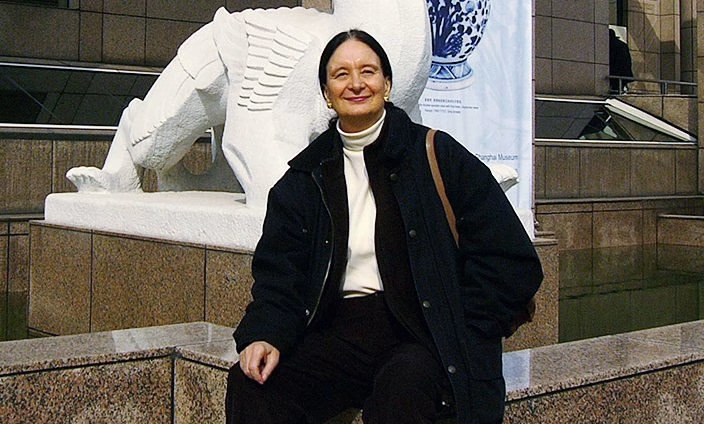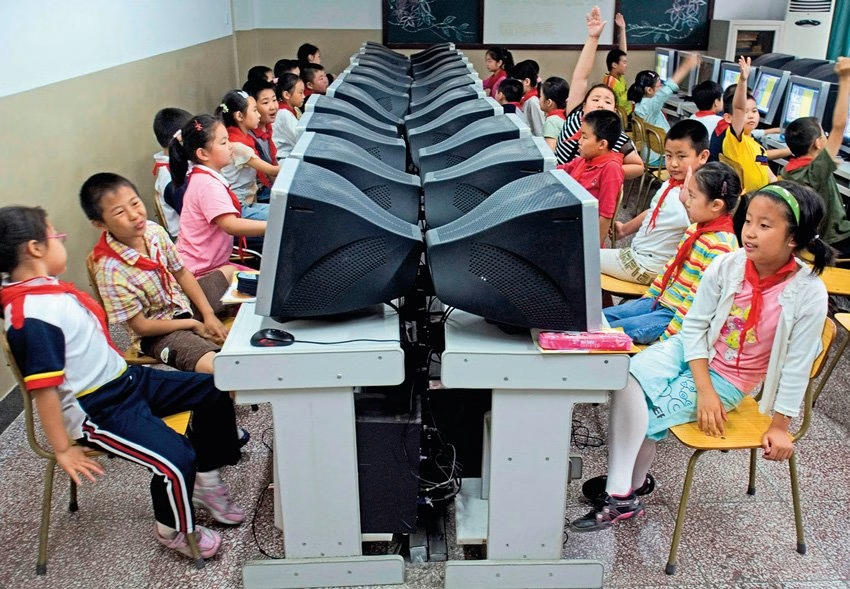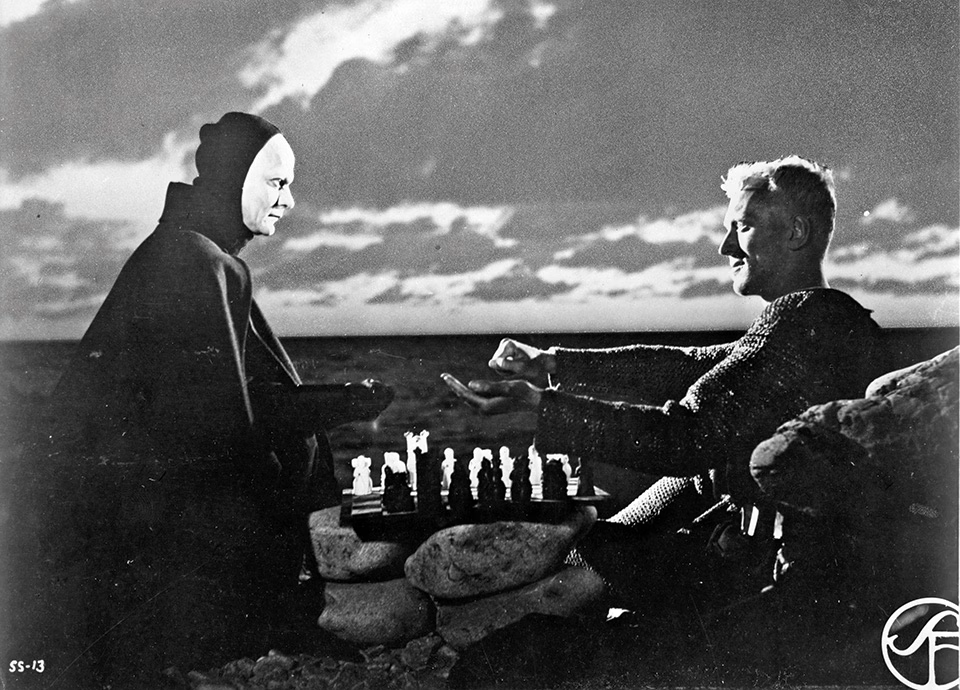There have been a number of books published in recent years that have tried to explain why Westerners have fallen behind in education compared to some Asian countries. The books have titles like The Learning Gap, The Teaching Gap and The Knowledge Deficit. Before we more closely examine the claims in these books, we must recall the ideas that shaped Swedish education over the last few decades.
In Färila in the northern Swedish province of Norrland, an experiment was carried out in the mid-1990s that illustrates the educational ideal of Swedish authorities. Here, in a primary school with a few hundred pupils, qualified teachers and no significant social problems, people wanted to test the educational model for the future based on the Swedish National Agency for Education’s plan Skol 2000 [‘School 2000’]. The school received a total of SEK 43 million extra from the Agency, from the EU Structural Fund and from Sweden’s Knowledge Foundation. Rarely has so much money been invested in so few pupils. At the lower secondary level, all pupils were given their own laptop. The pupils were not supposed to be stuck in classrooms; the school was instead supposed to be ”open”. The pupils could dispose of their time freely to write a report using the Internet and the library and then hand it in.
The pupils got to choose a special focus area in each subject. One student in grade 9 chose the Japanese economy, Hinduism, the spread of the dessert in Africa, a 19th century Swedish writer and snowmobiles. As Lars Naeslund from Linköping University emphasized in an evaluation, these kinds of choices are not a solid basis for studies at the upper secondary level. The model also meant that the pupils had nothing in common with their parents or grandparents, whose studies included content that was entirely different. The pupils did not even have any knowledge in common with their own classmates, because they had all chosen different subjects. Nor did the pupils practise having discussions with one another or speaking in front of a group because they did not have any classroom teaching, yet one of the main goals of primary education is to provide a basis for social participation and democracy. In the national exam in Swedish for ninth graders, there were an astonishingly large number of pupils who failed reading comprehension even though reading comprehension is an area where Swedes usually excelled. Moreover, the entire working method in this experiment was in fact predicated on reading comprehension because the pupils did not have lessons but instead had to seek out knowledge by reading. The evaluator explained the poor results in part by saying that he himself had seen many of the weak pupils just hanging out and passing the time. They had a hard time understanding what was in the books in the library and what they found online. When the evaluation came out, there was complete silence about the Färila experiment.
About a year later, the National Agency for Education published Nationell utvärdering 2003 [‘National evaluation 2003’], abbreviated as NU 03. In it, ninth-grade knowledge in 2002 was compared with ninth-grade knowledge in 1991. The Agency writes that knowledge had fallen, in some subjects only a little, in others sharply. The pupils had not improved in a single subject. The worst results were in mathematics, where pupils had fallen a whole year behind. Ninth-grade pupils in 2002 were at a level on par with eighth graders in 1991. One can add that in 1991 the level of knowledge had already been falling for many years and the measurement value involved was one that was ”on the way down”. And this was in a country that wants to have a high standard of living and has lived on engineering sciences and export industries. NU 03 also noted that the pupils’ knowledge in socially-orientated subjects was fragmentary and that this was also true of some basic knowledge like how the Swedish democratic process is organized.
Nor does the new school represent an attractive workplace for adults. NU 03 states that 98 % of the teachers at the lower secondary level were qualified in 1991. To qualify as a teacher, one needs a university degree in the subject being taught as well as teacher training. In 2002, that percentage had fallen to about 60 %. The survey also considers qualification to be one university term, what used to be called 20 credits (nowadays 30 ECTS credits), even though for a long time 40 credits (nowadays 60 ECTS credits) was the level for qualification. Could there be a connection between the teachers’ own knowledge and the pupils’? Having once been one of the world’s most successful countries in education up until about 1970, Sweden is now ranked in the middle among participating OECD countries in PISA comparisons. And in that case, we are still being compared with countries that have also had a decline in quality.
Philosophical currents from 1970
Teaching theory in Sweden is a huge industry involving some one hundred professors. How is it possible that this enormous investment in society has yielded falling results? If the theories that are being taught were right, wouldn’t the results have improved? If the results in Finland continue to improve, why is that not the case in Sweden, which invests more? This is due in part to some of the philosophical currents that have had an impact in Sweden but not in Finland:
1. Sociology of education. In teaching theory, people have been more interested in the pupils’ background than in improving their results. Educational sociologists are interested in discovering and highlighting differences between pupils. This approach has attracted different political groups, and the school’s task has changed from communicating knowledge to producing equality.
2. Constructivism. In teaching theory, the term constructivism is used to emphasize that all knowledge must be constructed in the pupil’s own brain. This, of course, is right. However, in practice, this has been taken further to mean that pupils themselves must seek out knowledge in order to learn something. Here we have the idea of ”active” pedagogy.
3. Focus on the working method. Constructivism emphasizes the working method more than the teacher’s knowledge or ability to convey knowledge. It advocates individual or group work, something that in turn has had an important impact on the absence of quiet in the classroom. Some pupils can use their time well, others work fairly well and others very little. The teacher has the role of suggesting the subject matter, developing material and being available if pupils want to ask about anything. The tasks suggested are supposed to be fun, because only then will the pupils use their time well. Even though the teacher is no longer really leading the work, he or she is considered responsible for the pupils’ results.
4. Inclusion theory. This theory maintains that gifted pupils should not be allowed to advance faster than others but should instead be included in the classroom to provide a good learning environment for slower pupils. Because it is not the level of knowledge but rather equality that is the real goal, it is not seen as a problem if gifted pupils do not develop as much. The idea of inclusion is also used for pupils who have behavioural problems. By mixing them with pupils who behave well and want to learn, the belief is that the problem pupils get help. This approach involves using some pupils as a means for the benefit of other pupils.
5. Modern technology. Sweden was one of the first countries to introduce IT on a broad front in schools. Politicians have shown great interest in pupils learning to use modern technology. It is good to know IT, but it is not clear whether it is generally effective to reduce classroom teaching in favour of IT-based activities. Young people also show a tendency to use IT more for communication and games than for learning. If technology were as important as people say, Sweden would have sailed to the top with respect to its level of knowledge.
6. The right to be different. In recent decades, there has been more talk about the right to be different and be respected than the right to have access to a good education. This view has frequently been combined with the pupils’ freedom to choose their content and resulted in girls choosing to study women writers rather than men writers, pupils in Norrland (in the north of Sweden) choosing subjects associated with Norrland and pupils from an immigrant background opting for a theme tied to their parents’ homeland. This freedom of choice contrasts with the idea of a society that needs a shared culture and that the teacher is supposed to communicate this culture. The teacher’s knowledge is of little interest if pupils can choose something outside the scope of typical teacher competence. Furthermore, why should pupils be in the same class if they are concentrating on completely different subjects?
7. Lack of interest in culture. Behind the various theories that have been enumerated here is a lack of interest in culture, for the intellectual efforts of earlier generations. (See Inger Enkvist, Uppfostran och utbildning, 2007.)
The Färila experiment brings together the different parts of this new educational theory. The experiment is unique given that it had such ample resources and was carried out in an area without social problems. Yet there are still politicians and educational theorists who defend the philosophical currents on which the Färila experiment is based. Our teacher training programmes continue to teach these models despite the Färila experiment, the PISA surveys and NU 03. Because the trends introduced in Swedish schools were influenced by developments in the US, it may also be time to address the criticism that American researchers, among others, have levelled at their own school system, inspired by international comparisons.
Mind the gap
The other false assumption is that reading should be formal knowledge, a technique, a strategy, that should make it possible to understand any text at all. There should be a shortcut to reading comprehension, for instance, by practising how to summarize a text or consider what the most important message is. Hirsch demonstrates clearly how reading comprehension is not a technique but comprehension of the subject in question. There is no other way to become a good reader than by having solid knowledge in many areas. So pupils need ”regular” lessons in different subjects, lessons that are combined with reading and writing tasks. In this way, pupils advance together in their vocabulary, reading and writing.
Because reading is tied to knowledge, there should be agreement in each country on what content should be taught in what grade. There can be no success in reading comprehension without having a curriculum that is clearly thought out and also adhered to. Hirsch notes that young people can learn 2,000-5,000 words a year, mostly in an indirect way. If pupils know 90-95 % of the words in a text and know about the subject, they will understand the text and can absorb the new words and concepts contained in the text. If, however, they only know 70 % of them, they will not understand the text and will learn nothing new. The instructional material must thus be adapted to the pupil’s level.
Michael Barber and Mouna Mourshed have done a benchmarking study based on the PISA reports. They have investigated the countries that had the best results and those that improved most in order to identify what factors are the most important in order for a country to have a successful school system. The first observation is that there is no connection between investment in education and results. The countries that are on top, like South Korea and now Finland as well, are not the ones that invest the most. However, they do concentrate on learning subject matter.
The report also shows that the teacher’s intelligence and training are the key factor. What do the successful countries do? 1. They get 5-10 % of the best upper secondary students to apply to a teacher training programme. 2. In order to attract these upper secondary students, teachers are given starting salaries on par with comparable professions requiring a university degree. 3. These countries make sure that teacher candidates have access to the best university teachers. 4. They guarantee teacher candidates a job once they have graduated. 5. They follow the teachers during their first few years after graduation to make sure the new teachers are doing well in their teaching. Finland does all this and also has an effective special education program for pupils who have fallen behind.
One item in the report ties together the two studies. It is noted that a simple vocabulary test for the teachers has a clear connection with the progress of their pupils. Pupils who get a teacher who has a large vocabulary, that is, with solid knowledge, do much better than those who have an average teacher. According to the study, pupils with a clever teacher can advance three times faster than others. If pupils at the primary level have teachers who perform poorly several years in a row, it may be impossible to catch up and bridge this gap, the report stressed.
The report shows that it is important to have supervision as close to the classroom as possible. Teachers do not need lectures on teaching theory as much as they need good advice on exactly how to be a more effective teacher. Barber and Mourshed also note the role of the headmaster. It is a matter of finding the right teacher to become headmaster and then train prospective headmasters so that they are effective. It has to be possible to assign people who do not function well in school management positions to other positions. The objective of the work to get the best teachers and the best school management is to give each pupil the best education possible. All of the school systems that had good results set a high goal for every pupil.
The report also mentions how nearly all industrial countries have tried to improve their education but that few have succeeded because they have not concentrated on the essential, that is, teaching the subject matter. The report states that neither more money, higher teacher salaries, fewer pupils per class nor use of technology is effective if there is no focus placed on pupils learning the subject matter.
Harold W. Stevenson and James W. Stigler, two American psychologists who speak Chinese and Japanese, respectively, have compared primary and lower secondary schools in Japan, China and the US. They note that instruction in Japan and China is similar in many ways to the education found in the US up until the 1950s. They dismiss the idea that success is due to drills and have instead seen a number of qualitative factors. The school year is longer but pupils have fewer lessons each day. This provides a steady pace and does not tire the pupils out. Teachers have fewer lessons to prepare each day and more time for preparation. Every pupil is assumed to be capable of learning everything, pupils have homework each day, and teachers maintain close, regular contact with the family. The schooling of children is considered to be their most important task. The children have plenty of time to play before school starts and during breaks. They also have time to watch TV but do it only after they have done their homework. There are often up to 40 pupils in each class, which works because the pupils learn early on how to behave in the classroom so as not to bother one another.
The two American psychologists pay particular attention to the fact that lessons in the US include more discussion about alternatives than the lessons they studied. A wrong answer is an indication that the pupil has more to learn. They wonder whether the American practise of organizing learning can be a relic from the days of behaviourism, when pupils were supposed to be made to see the right answer, which would then be reinforced. The psychologists complain that American education is focused more on measuring differences among pupils than on emphasizing the important shared trait that everyone can learn.
One of the psychologists, Stigler, together with James Hiebert, investigated the teaching of mathematics at the lower secondary level in connection with the TIMSS reports. They video-recorded lessons in the US, Germany and Japan, and they can identify major differences, with Germany falling between the two. In Japan, a maths lesson is usually a lesson in reflecting on a problem and them assessing the various alternatives. The problems can be difficult, and the pupils learn that they must be prepared to make a great effort if they want to arrive at the right answer. The pupils think and reason for a large part of the lesson. In the US, the teacher introduces a problem that can be solved relatively easily by the pupils. Behaviourism may have inspired this methodology, which often involves solving a large number of similar problems. Some pupils give up if they do not immediately find the solution. The teachers’ varied approaches can also be seen in the . different tools they use. In the US, it is common to use overhead projectors or computers and in Japan the blackboard. At the end of the lesson, Japanese pupils can see what thought processes developed during the lesson. In the US, it is typical to think that a pupil is either gifted or not gifted in maths. The Asian approach is to emphasize the importance of making an effort. Teachers in the US seem to think pupils find maths boring and that they have to bring in other material to make the lesson more fun. In Japan, teachers assume that pupils think maths is as exciting as they themselves think it is.
Liping Ma has compared mathematics instruction at the primary level in the US and China. Her results show that Chinese teachers get better results despite having a shorter education, which is nonetheless more focused on their knowledge of subjects. Chinese teachers see counting as an intellectual skill, something one understands, and not as a procedure, a formal skill. By way of summary, she demonstrates that teacher competence can not replace knowledge about the subject matter even at the primary level, which is exactly the results arrived at in Barber and Mourshed’s benchmarking study.
Many countries, especially the English-speaking ones, have taken to heart the information from the international comparisons and studies like those described here and are making advances in international comparisons. Sweden should likewise heed the warning one can hear in the London underground: ”Mind the gap”.

Redan prenumerant?
Logga inAxess Digital för 59 kr/mån
Allt innehåll. Alltid nära till hands.
- Full tillgång till allt innehåll på axess.se.
- Tillgång till vårt magasinarkiv
- Nyhetsbrev direkt till din inbox















